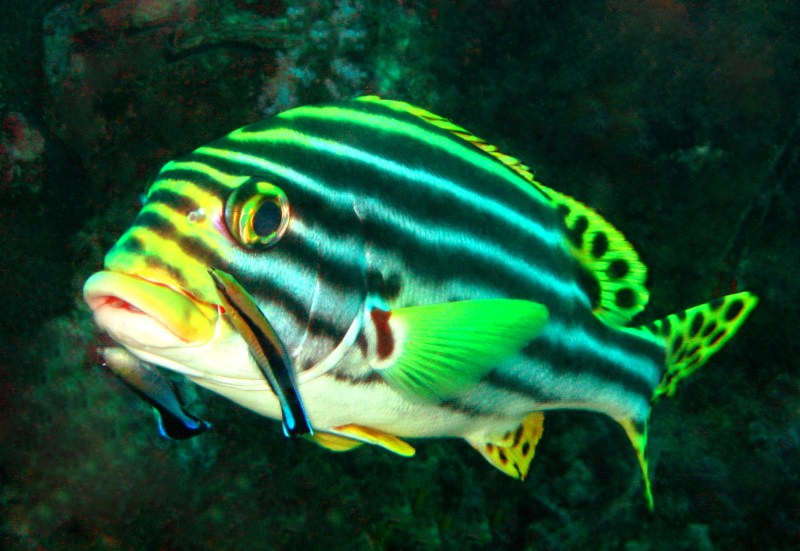Animal Communication – Communication is an important part of animal survival. Like humans, it is the ability to send, receive and respond to various signals. Animals communicate with each other in many ways. These include communication through visual, auditory, tactile and chemical means. The concept of animal communication is not primarily talking to each other but attracting mates, warning predators, marking territory and identifying themselves.
Visual communication is divided into two groups: badges and displays. Badges represent the animal’s color and shape, and displays are what animals use to communicate. For example, according to an article in Nature, when a ruffed grouse, a type of bird, flies around with its tail feathers spread, he is trying to attract a female. Auditory communication is more common when you think about animals trying to talk. Many animals make loud noises to warn others that a predator is approaching. Tactile communication establishes dominance and comfort in various bonds. A good example of this is that every time your dog paws at you or your cat rubs against you, they are trying to communicate with you. A female tiger will lick and comfort her cubs, so that her cubs feel safe with her mother. Finally, chemical communication occurs when animals attempt to mark their territory or attract mates. A skunk will release its scent to let others know that this is its territory.
Animal Communication

It’s interesting to see animals interact with each other in different ways, but what’s even more interesting is human interaction with an animal. The best example of this is a companion dog and its owner and the relationship they form. In order for people to understand their dog, it is easy to see what the dog’s body language is. We understand their expressions, body postures and different movements that allow us to give the dog what he wants. Dogs, on the other hand, surprisingly understand humans more than we think. According to a study conducted by researchers at Eötvös Loránd University in Budapest, Hungary, 13 dogs and their owners were tested on their brain’s ability to recognize human speech. 13 dogs were tested with an fMRI, measuring brain activity, where they would be tested on two different sentences, common sentences that their owners would say to the dog and another meaningless sentence. Looking at the MRI results, the left hemisphere of the dog’s brain lights up when it hears simple sentences. This region of the human brain is linked to language processing, so research findings show that dogs have a great ability to distinguish the meaning of different words. Based on this single study it is difficult to say that dogs understand the meaning of all known words. Animals as a whole communicate in different ways for different reasons. We now know that dogs understand us more than we previously thought, and in the future, we hope to discover more information about communication between us and our pets. Home / Science of language / Do animals have language? Differences between human language and animal communication
Benefits Of Animal Communication
In the 1960s, linguist Charles Hockett identified a number of “design features” to distinguish human language from animal communication systems. While there is ongoing debate about the usefulness of these design features, they accurately describe the unique characteristics of human language.
Linguistic features are shared similarly by signed and spoken languages. The list of major design features has changed over time, but there are some features that all human languages seem to share, with the exception of animal communication:
This means that we can combine words or word fragments to form new words, and combine those words to form sentences. And every language has “rules,” for lack of a better word, that govern how its units are put together.
English prepositions must precede their dependents: ‘her of she with’ (instead of ‘with her’) is not grammatically correct in English. Every language is made up of such grammatical “rules”, although they vary widely depending on the language.
Communication Without Meaning Or Information: Abandoning Language Based And Informational Constructs In Animal Communication Theory (chapter 6)
, which are sounds in spoken language and gestures in sign language. Phonemes distinguish sounds but do not have independent meaning.
Consider the words ‘fib’ and ‘fit’: the phonemes /b/ and /t/ mean nothing in English, but they distinguish two words that have different meanings.
These include the past and future, physically distant events, and things experienced mentally, such as stories, dreams, and emotions.

Show it as part of the structure of the language by using future tenses like “after” or “will.”
Animal Communication: Helping You Make The Best Decisions For You
When you imagine the word “bed” there is no reason why bed comes to mind. A bed is only called a bed because we say so and continue to teach it.
I went to the store. I went to the store. I went to the store first.
Words and sentences are not simply spoken. They are said to communicate meaning in some shape or form.
It means nothing to English speakers because it has no meaning. It is a set of words that do not convey meaning.
Amazon.com: Animal Communication My Conversations With Animals, Workbook, Protocols, Journal: With Templates, Learn And Practice Your Intuitively And … And Wild Animals, Understand Their Language: Publishing, Conscious Tribe: Books
Repetition means that a linguistic unit can contain a unit of the same type: a phrase or sentence can contain many other phrases or sentences.
‘Claudia thinks’ is a sentence that can contain (potentially) infinite other sentences. “Claudia thinks voting is important” is a single sentence that actually contains two sentences and could contain many more.
*** Repetition has not been found in any animal communication but appears to be a universal feature of human language.

, because bee dances may describe sources of nectar discovered in the past and not immediately experienced.
Acoustic Communication In Animals: From Insect Wingbeats To Human Music (bioacoustics Series Vol.1)
The limited productivity of bee communication also involves limited movement: the only non-immediate entity that can be talked about is the source of the nectar.
Although communication among great apes is much more complex than that among bees, there is no evidence that our hominid companions have actual language.
The language has been debated, but the consensus among researchers is that it’s not possible. However, a study of wild chimpanzee gestures found that they spontaneously use at least 66 gestures, none of which were taught to them by humans.
The same study found that there is considerable overlap between these gestures and those used by gorillas and orangutans. Orangutans apparently know how to mimic, a communicative behavior thought to be exclusive to humans.
Animal Communication: By, Damaris Benny Daniel Ii Msc. Zoology
The hominid language debate may be resolved, but the status of dolphin communication has recently been contested. We know that dolphins’ communication is sophisticated and that they can learn complex linguistic concepts, including abstract ones.
The dolphin brain is second only to the human brain in terms of body-brain ratio. In part, because they are so intelligent, we still don’t know much about dolphin cognition, communication, and behavior.
Yet there is no evidence that dolphins have language. Otherwise, the claims are criticized as misleading and poor methods of data collection or misinterpretation of results.

We have no evidence that dolphin communication has basic features of human language, such as productivity or repetition. There isn’t even enough evidence that dolphins use words in the wild, let alone sentences.
Animal Communication Made Easy
This isn’t necessarily depressing: There’s a lot to learn about dolphin cognition, social behavior, and communication, whether or not they have language. In fact, dolphins seem to be more social than us.
Dolphins’ lack of language doesn’t diminish their intelligence, but it highlights how special human language truly is. Social and communicative behaviors are by no means exclusive to humans, but only humans have developed language.
Language can be considered a skill or a behavior, or perhaps both, but status aside, it is uniquely human. All our behaviors and outcomes, as individuals and as a community, rest on the foundation of language.
Whether human language or animal communication, learning a new language expands the boundaries of our behavior, communication and cognitive discovery.
Clearing Up Mixed Messages In Animal Communication With Your Pets
Whatever your reason for learning a language, Pimsleur has the products to let you explore different means of communication! Try Pimsleur today! Everyone knows that cats meow, dogs bark and cows moo. But Old Macdonald doesn’t have to tell you that animal communication is infinitely more complex than that. In fact, if you delve deeper into how some animals talk to each other, you’ll find the hidden languages that make up the different languages of humanity: 6,900, according to the Linguistic Society of America. -seems primitive in comparison. From the flying mice that go about their days to the lizards that have created their own version of Seamless.com, here’s just a little taste.
White rhinos, which have terrible eyesight, use communal dung heaps (called “piles”) as community noticeboards where they can post messages – telling them that a rhino is sick or ready for another mating, if a dominant male has recently wandered – to the rest of the group.
This animal has the most impressive complex vision in the animal world, with 16 color receptors (compared to our paltry three), which comes in very handy when trying to communicate with each other. I am
Animal communication with humans, animal communication book, psychic animal communication, animal spirit communication, communication, animal communication course, animal communication buttons, telepathic animal communication, animal communication pdf, what is animal communication, learn animal communication, animal communication books
- Pet-friendly Weekend Getaways - August 13, 2024
- Dog-friendly Road Trips - August 13, 2024
- Top Dog-friendly Resorts - August 13, 2024






